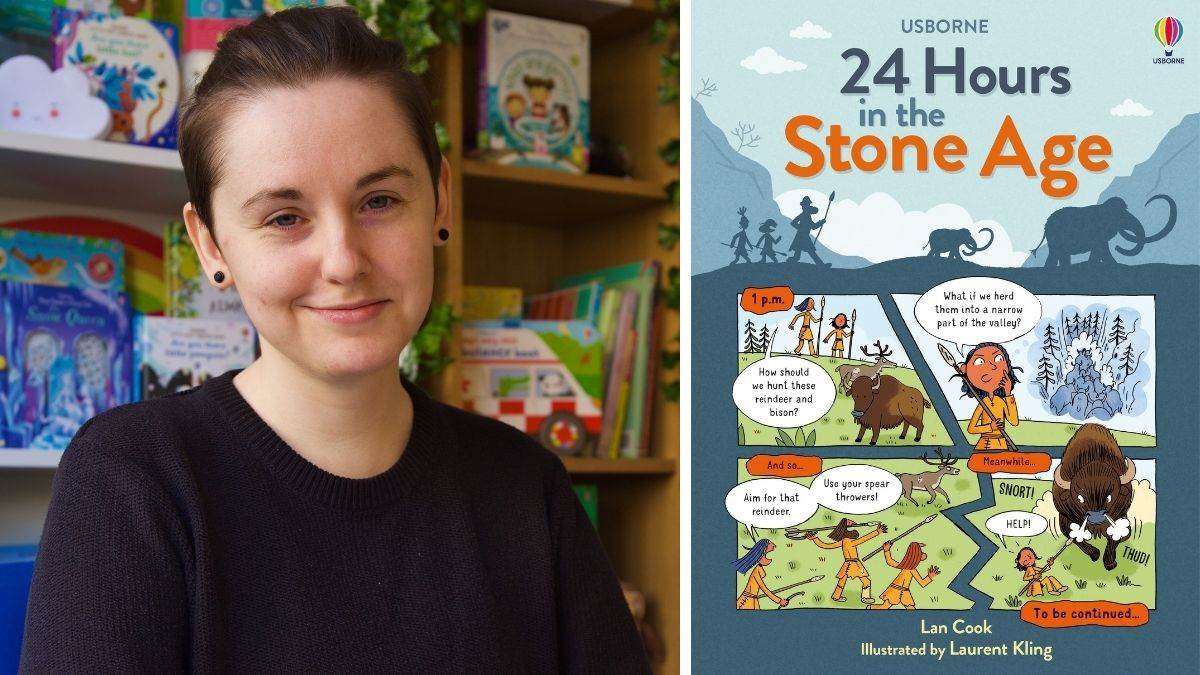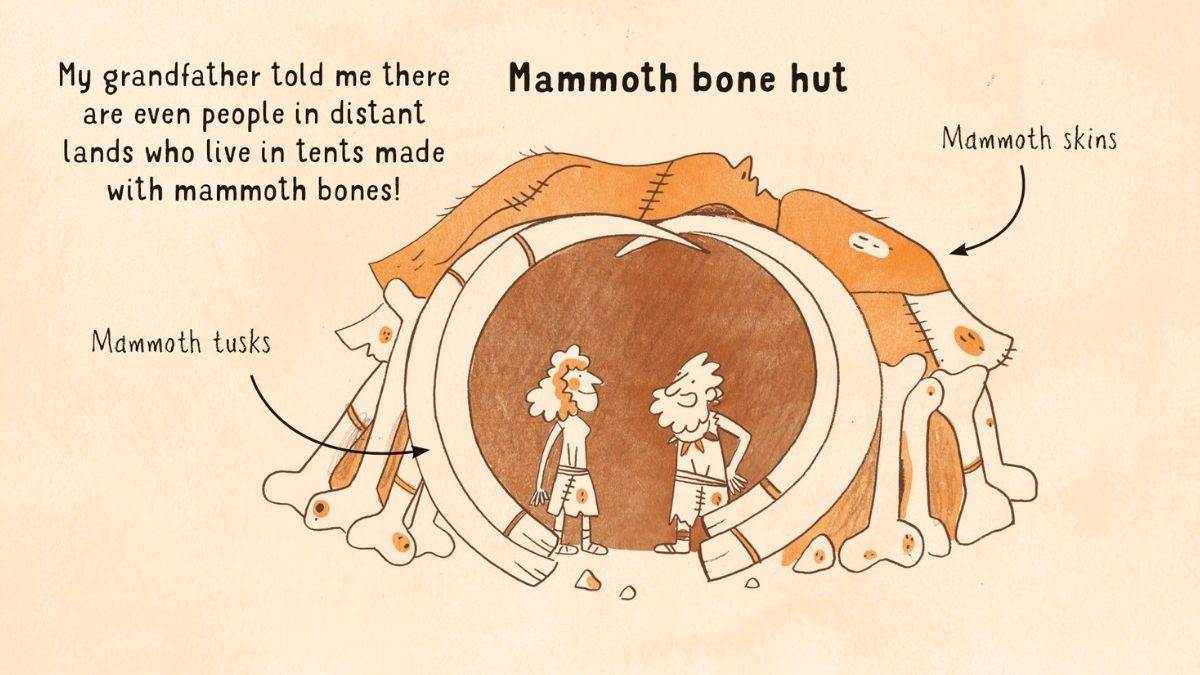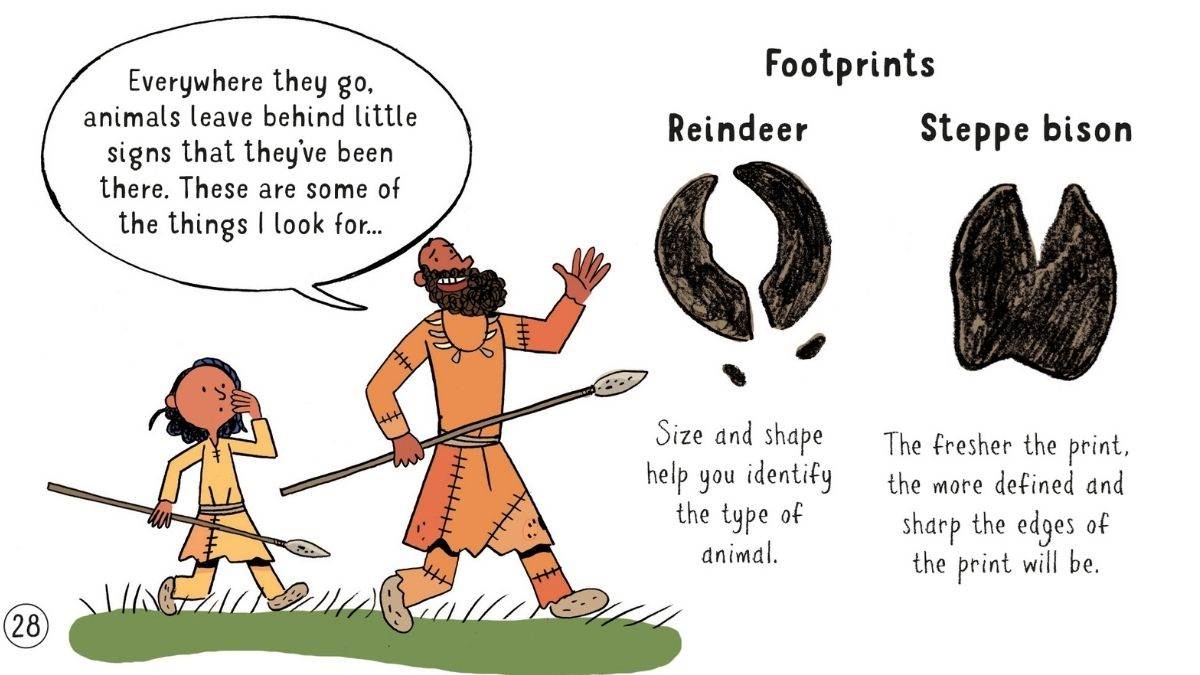What did the Stone Age ever do for us? Well... quite a lot actually!
Published on: 11 November 2021
Lan Cook's fab book, 24 Hours In The Stone Age, has been nominated for the Best Book With Facts prize in the Blue Peter Book Awards 2022.
Here, Lan lets us into some of the secrets of the Stone Age you might not know about - from art, to plumbing, to brain surgery!
 Author Lan Cook and the cover of 24 Hours In The Stone Age
Author Lan Cook and the cover of 24 Hours In The Stone Age
"They've invented everything"
It’s easy to think of the earliest period in human history as totally mysterious and unknowable, or peopled with primitive, club-wielding cavemen, but archaeological evidence shows us quite the opposite. Though they lived over 4,500 years ago, Stone Age people were creative, caring and incredibly inventive with what was available to them. Here’s a small handful of things that we have Stone Age ingenuity to thank for. Picasso said it best when he visited the Stone Age cave paintings in Lascaux, France… “They’ve invented everything”.
Music
Since the discovery of a delicate bird-bone flute in southern Germany, we know that humans have been making music for at least 40,000 years. The tunes and melodies it would have played are lost to us, but we do know what it sounds like thanks to a modern-day replica. Music was clearly important to Stone Age people, as bone, and ivory flutes especially, would have taken quite some time and effort to make and get just right.
Art
Cave paintings are some of the oldest artworks to exist all over the world, from Europe to Asia, Africa to Australia and the Americas. Cave painting is at least 40,000 years old and possibly dates back 64,000 years. The topics of the paintings are still familiar to us today, with scenes of nature and everyday activities being especially common. Impressions of handprints can also be found, giving a real sense of connection to those who left them so long ago.
 Illustration: Laurent Kling
Illustration: Laurent Kling
Written language
Alongside paintings of bison, horses and lions in French and Spanish caves, researchers may have discovered the world’s oldest from of written language. No one is quite sure what the 32 symbols mean – perhaps a code representing specific ideas – but they are clearly arranged, often in specific orders, to mean something. These symbols can be found on the walls of around 200 caves throughout Spain and France, and could push the recognised birth of writing back to an astonishing 30,000 years ago.
Plumbing
Plumbing was introduced to the world in the form of clay sewer pipes around 6,000 years ago, where they were used to remove wastewater and capture rainwater at the Temple of Bel, in the Mesopotamian city of Nippur. Between 3,200-2500 years ago, indoor plumbing and toilets had become a feature of the late stone age settlement of Skara Brae in the Orkney Islands, a thousand years before such conveniences became common in the cities of Ancient Egypt and Minoan Crete.

Illustration: Laurent Kling
Dentistry
Around 13,000 years ago, people living in the mountains of central Italy had their very own dentist. Archaeologists have discovered teeth from six people that show signs of a procedure that any modern dentist (or patient) will recognize – filled cavities, or “fillings”. Marks on the teeth show that a sharp, pointed stone tool was used to scrape out the decayed parts and widen the cavity (no high-speed drills here). The dentist then prepared a sticky mixture of bitumen – a natural tar used to waterproof things such as baskets – plant fibre and hair, that was smushed down to fill the hole.
Brain surgery
Long before the advent of modern brain surgery, our prehistoric ancestors were performing a medical procedure called trepanning. Trepanning involved cutting or scraping a hole into the skull. It was possibly used to try and cure headaches or release pressure from an injury, and in many cases it seems to have been a very successful. Around half of all patients survived, with evidence of healing and years of bone regrowth visible.
Topics: Non-fiction, Historical, Blue Peter Book Awards, Features




